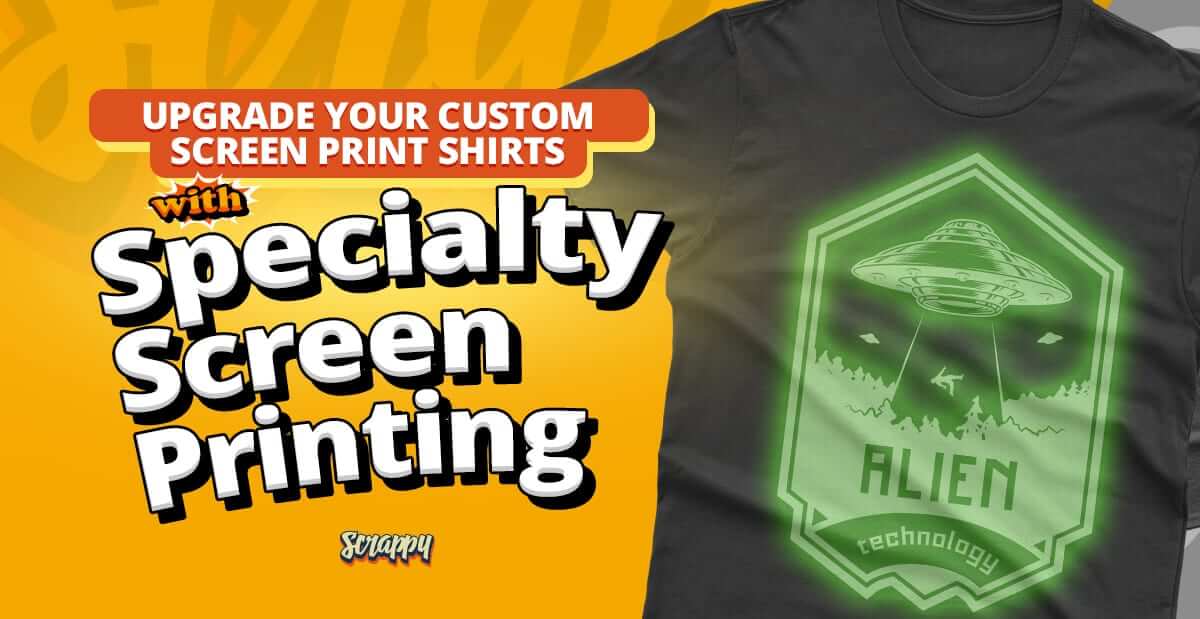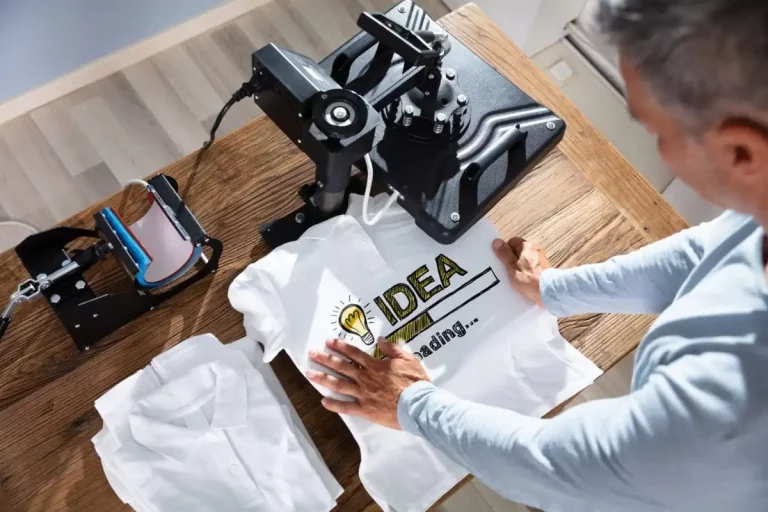Creative T-Shirt Printing Ideas for Small Brands
Creative T-Shirt Printing Ideas for Small Brands
Blog Article
Display Printing Uncovered: Everything You Need to Learn About Tee and Garment Printing Techniques
If you have actually ever asked yourself exactly how those dynamic layouts wind up on your preferred tee shirts, you remain in the best place. Screen printing is a remarkable method that integrates art with method, using endless opportunities for imagination. Understanding the fundamentals, from devices to ink options, can significantly impact your results. All set to explore the necessary aspects that make screen publishing an art form? Allow's reveal the information that can raise your tasks.
The Fundamentals of Screen Printing: How It Functions
When you plunge right into display printing, you'll uncover it's both a scientific research and an art. At its core, screen printing entails producing a stencil, or screen, that allows ink to go through just in particular locations (screen printing kit). You start by choosing your layout and preparing your display with a light-sensitive emulsion. Once you expose this solution to light, it hardens, leaving your style as a negative space.
Placement the display over the material, after that use a squeegee to push ink with the display onto the garment. Each action is crucial, and mastering them will boost your display printing skills, transforming easy garments right into unique, meaningful items.
Types of Screen Printing Methods
Once you comprehend the essentials of display printing, it's time to explore the different strategies that can boost your designs. One popular technique is typical display printing, where ink is pressed via a stenciled display. This technique is fantastic for vibrant, vivid colors. After that there's water-based ink printing, which offers a softer feel and is environment-friendly, yet it requires a different approach to curing.
One more alternative is plastisol printing, understood for its durability and vivid shades, making it a favorite for several brand names. Experiment with halftone printing to create gradient results and elaborate designs.
Important Tools for Screen Printing
To achieve stunning results in display printing, having the right equipment is basic. You'll require a durable display printing structure, which holds the mesh that moves your design onto the garment. Next, spend in top quality squeegees; these are necessary for using ink uniformly across the display.
Picking the Right Inks and Products
When choosing inks and materials for screen printing, you need to take into consideration the type of ink that works finest for your job. Believe about fabric compatibility to assure your designs look terrific and last long. Likewise, explore green ink alternatives to make your printing procedure extra lasting.
Sorts Of Screen Inks
Choosing the right display ink is essential for accomplishing vibrant, sturdy prints that fulfill your job's demands. There are several types of screen inks to examine. Specialty inks, such as glow-in-the-dark or metal, can add one-of-a-kind effects to your styles.

Material Compatibility Considerations
Comprehending fabric compatibility is vital for attaining top notch screen prints, specifically given that different materials react uniquely to different inks. Always check your inks on sample material to assure they stick effectively and preserve shade integrity. In addition, maintain in mind that textile weight and structure can influence the final result, so picking the appropriate ink and product combo is crucial for your project's success.
Eco-Friendly Ink Options
Environment-friendly inks are becoming a prominent option for display printers that desire to decrease their ecological impact while preserving high quality. When choosing inks, take into consideration water-based inks, which are less dangerous and less complicated to cleanse up contrasted to conventional solvents.
Furthermore, search for inks made from renewable energies, such as soy or vegetable-based options. By selecting the best inks and materials, you'll not only create magnificent designs but additionally add to an extra sustainable printing procedure. Make the switch, and your prints will certainly mirror your dedication to the setting!
Preparing Your Style for Display Printing

File Style Requirements
To guarantee your style looks vivid and sharp on fabric, you'll require to pay attention to submit format demands for display printing. Start with vector files like AI or EPS, as they can be scaled without shedding quality. If you utilize raster photos, choose high-resolution files, have a peek at these guys such as TIFF or PNG, preferably at 300 DPI. Avoid utilizing JPEGs, as they can shed quality when resized. Additionally, make certain your layout has a clear background to stop undesirable white sides on your prints. Finally, keep shade modes in mind; CMYK is conventional for display printing, so convert your RGB makes accordingly. By adhering to these guidelines, you'll establish your artwork up for a successful print.
Shade Splitting Up Methods
Shade splitting up is a vital step in preparing your layout for screen printing, and mastering it can considerably improve your print top quality. You'll need to break your layout right into private colors, as each shade needs a different screen throughout printing. This precision not only assures precise shade representation yet additionally simplifies the printing process.
Resolution and Dimension
Accomplishing the very best lead to display printing begins with ensuring your layout has the best resolution and dimension. Ideally, your art work should go to least 300 DPI (dots per inch) for sharp, clear prints. If you use lower resolution, your end product may look less than professional and pixelated.
When it involves size, consider the dimensions of your print area. Layout your art work to match the last print size, ideally creating it in the actual dimensions you'll be publishing. In this manner, you'll prevent any kind of unexpected scaling problems.
Constantly examine your design in both vector and raster styles. Vector graphics can be scaled without shedding top quality, making them perfect for display printing. Preparing correctly will assure your design looks fantastic on about his every garment!
Step-by-Step Screen Printing Process
Display printing is a vibrant procedure that allows you to develop lively layouts on different surfaces. To start, you'll need a display, emulsion, and your chosen ink. First, prepare your display by cleaning it extensively. Next off, use the emulsion uniformly and allow it dry in a dark area. As soon as completely dry, subject your screen to light with your design put on it, which will harden the emulsion where the light hits, producing a stencil - screen printing kit.
After cleaning out the unexposed solution, your display prepares. Establish it up on your printing surface area and straighten your garment underneath it. Put ink onto the screen and use a squeegee to push the ink with the stencil onto the textile. Raise the screen thoroughly and let the print dry. Treat the ink utilizing warm to guarantee durability. That's it! You have actually effectively screen printed your design.
Tips for Effective Screen Printing Projects
While you're diving right into your screen printing jobs, keep in mind that preparation is key to success. Begin by gathering all your products-- inks, garments, screens, and mops. A clean office helps protect against unwanted mistakes, so clean up before you begin.
Next, validate your artwork is high-resolution and properly sized for your garment. Check your display for appropriate exposure and clean it extensively to avoid smudges. When mixing your inks, comply with the maker's standards to attain the best uniformity.
During printing, apply also stress with your squeegee for consistent results. Don't hurry; take your time to confirm each print fulfills your standards. After printing, let your garments dry entirely before taking care of or packaging them.
Lastly, constantly maintain an example of your help future recommendation. This means, you can evaluate your progress and enhance your strategies in time. Delighted printing!

Often Asked Concerns
Exactly how Long Does It Require To Establish a Screen Printing Job?
Establishing up a display printing work typically takes around half an hour to an hour. You'll prepare the displays, mix inks, and change journalism. The moment varies based on intricacy and experience, so remain organized!
Can I Publish on Different Fabric Types Making Use Of the Exact Same Technique?
Yes, you can publish on different textile kinds utilizing the exact same technique, however you'll need to adjust your setups and inks. Some materials absorb ink differently, so experimenting guarantees the ideal outcomes for each product.
What Prevail Mistakes to Stay Clear Of in Screen Printing?
When display printing, prevent typical errors like using the incorrect ink, ignoring proper direct exposure times, or skipping pre-press checks. Constantly test your arrangement and preserve tidy displays to ensure quality outcomes each time.
How Can I Effectively Clean and Maintain My Display Printing Devices?
To properly tidy and maintain your display printing devices, you should routinely clean screens with proper solvents, inspect mops for wear, and guarantee all devices are saved dry and dust-free. Consistency improves and stops costly repair services efficiency.
Is Screen Printing Ecologically Pleasant Compared to Various Other Approaches?
Screen printing can be a lot more eco-friendly than other techniques, especially if you use eco-conscious products and water-based inks. By picking sustainable materials and techniques, you reduce waste and reduce your effect on the earth.
Screen Printing Uncovered: Whatever You Need to Know Regarding Tee and Garment Printing Strategies
At its core, screen printing includes producing a pattern, or display, that permits have a peek at these guys ink to pass via only in particular areas. Setting the display over the material, then make use of a squeegee to press ink via the display onto the garment. One preferred technique is traditional screen printing, where ink is pushed with a stenciled screen.When selecting inks and products for screen printing, you require to take right into account the kind of ink that works best for your job.
Report this page